In the grand orchestra of industrial machinery, the slip ring induction motor plays a symphony of power and flexibility. Often known simply as a “slip ring motor,” this stalwart of the motor world stands out for its unique design and multi-faceted performance. Built on the principle of converting electrical energy into mechanical action, these motors provide reliable and robust operations across myriad heavy-duty applications. As we turn the wheels of time, these machines have become essential, underpinning factories, industries, and sectors worldwide. In the stride of this technological advancement, it becomes vital for us to understand how these components function, their advantages and limitations, and their pivotal role in powering our industries. Through this comprehensive article, we aim to shine a light on the working world of the slip ring motor, delivering deeper insights into its construction, workings, and significance in various industries. We begin our exploration with a simple yet necessary understanding of what a slip ring motor is and the basic principles that guide its operation.
Introduction to Slip Ring Induction Motors
Unseen but impactful, slip ring of induction motors are integral forces powering our industries. Commonly known as a “slip ring motor”, this powerful machine is a type of three-phase induction motor, fundamentally built around the principle of electric induction. This core principle revolves around the conversion of electrical energy into mechanical energy, a concept that remains the building block of nearly all power-generating machinery. A key feature of these motors is the slip ring, which is essential for efficient energy transfer to the rotating components.
Understanding the simple, fundamental concept it’s designed upon equips us with the knowledge to explore how it functions on a deeper level. Picture the slip ring motor as a tireless workhorse, relentlessly exerting torque beastly enough to drive some of the most demanding industrial applications. Imagine turning on a demanding machine and seeing it spring to life, harnessing the mechanical energy produced by the slip ring motor.
In this intricate dance of energy transformation, the slip ring motor exhibits its robust ability, allowing this energy transfer to occur effectively and seamlessly, making it a crucial part of many industries. Throughout this article, we will expand on this fundamental comprehension, deep-diving into the complex mechanism of the slip ring motor, its components, functionalities, and its matchless contributions to powering our world. Armed with this foundational understanding, let’s gear up to delve deeper into the machinery’s intricate inner workings.
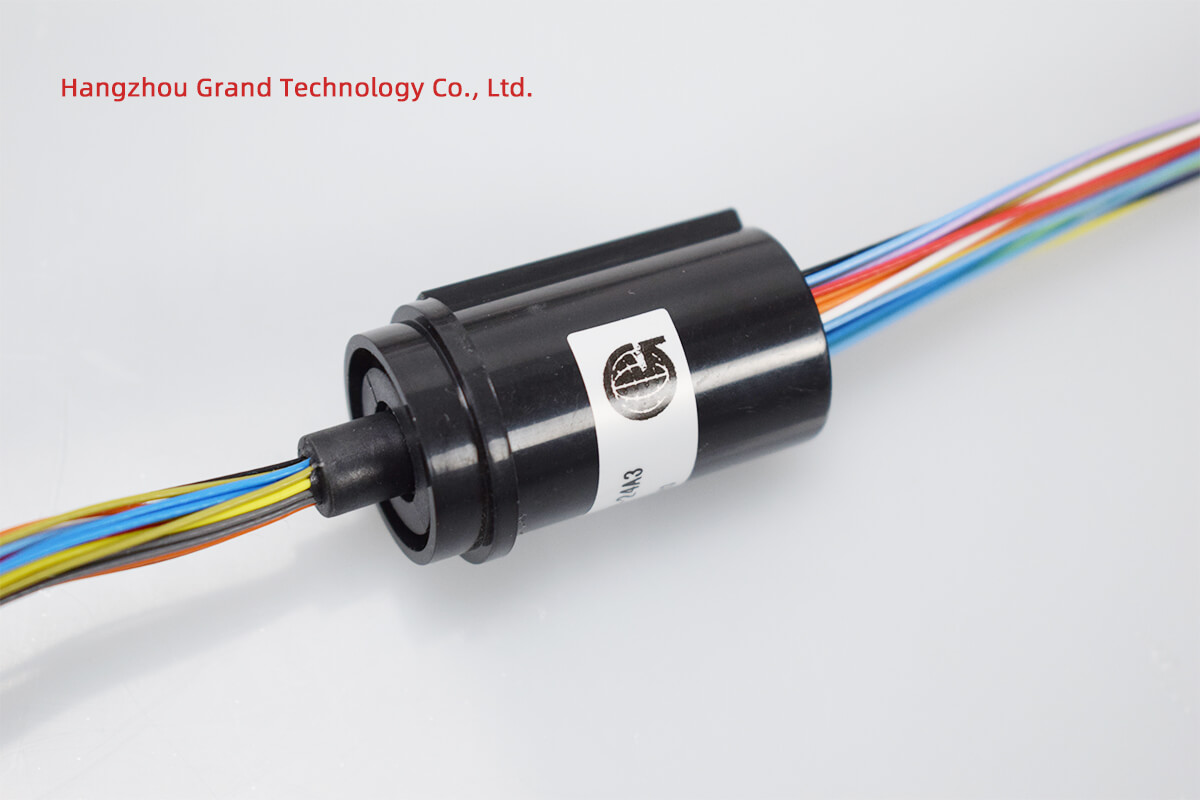
Why Slip Rings Are Used in an Induction Motor
In the intricate mechanics of an induction motor, many components play their part harmoniously. One of the unsung heroes orchestrating this symphony is the slip ring. To comprehend their significance in detail, it’s necessary to take a moment and break down the fundamental role that slip rings play in an induction motor.
Let’s visualize slip rings as the ‘messengers’ within the motor. Their primary role is to transfer electrical power from a stationary component to a rotating element within the motor—a critical operation that warrants an uninterrupted and smooth circulation of electricity. They enable an external resistance to be inserted in the rotor circuit for precise control of motor speed, broadening the motor’s versatility in diversified applications that require variable speeds.
It’s comparable to a relay runner passing on the baton; the motor cannot complete its ‘lap’ if the ‘baton’, the electrical current, isn’t transferred smoothly. Slip rings enable this seamless transfer, ensuring that the motor continues ‘running’ with supreme efficiency.
However, let’s not forget that the function of slip rings extends beyond this ‘messenger’ role. They also allow the induction motor slip ring to offer a high starting torque and a greater degree of control over motor speed. Recognizing this, we can begin to appreciate how these small yet significant components play a pivotal role in driving the function and flexibility of an induction motor. As we step further into the world of slip ring induction motors, we’ll discover more about their importance and their contributions in shaping the function and effectiveness of these incredible machines.
Slip Ring Induction Motors Construction and Components
Just as it takes an array of diverse instruments to conduct a beautiful symphony, a slip ring induction motor requires a collection of various components operating harmoniously together to function effectively.
At the heart of this mechanism lie two main parts: the stator and the rotor.
The stator, as the name suggests, is the stationary outer part of the motor containing windings connected to a three-phase alternating current. This is where the generation of a rotating magnetic field begins, setting the stage for the motor operation.
Next, we delve into the heart of the motor—the rotor.
Unlike the stator, this part isn’t stationary; it’s designed to rotate, thereby creating mechanical energy from the magnetic field. The rotor comes equipped with an assembly called the wound rotor or the slip ring rotor.
The slip ring assembly in the rotor is, without question, one of the most crucial aspects of the construction. Comprising three separate rings, each attached to the rotor through terminals, the slip rings provide the rotor’s rotating mechanism with the required electrical supply. The current flow from the stator is transmitted to the rotor via these slip rings, which in turn, rotate and create torque.
Additionally, the slip ring assembly is accompanied by brushes to maintain electrical conductance between the stationary and rotating parts of the motor. These brushes permit smooth and consistent electricity flow, further enhancing the motor performance.
It’s a marvel seeing how each intricate component within a slip ring induction motor contributes towards a fantastic mechanical symphony that’s performed every day in countless applications. With this understanding, we’re ready to explore further precisely how this magnificent motor operates, enriching our comprehension of its capabilities and diverse uses.
Slip Ring Induction Motor Working Principle
Working Principle of Slip Ring Induction Motor
Navigating through the operational intricacies of a slip ring induction motor can be akin to navigating the cogwheels of an intricate timepiece. Yet, it is indisputably fascinating. Let’s delve into the interplay of events that result in the motor’s movement, thereby paying particular attention to a pivotal characteristic known as “slip.” In this exploration, we will focus on the working principle of slip ring induction motor, which plays a crucial role in translating electrical input into mechanical output.
The lifecycle of the motor’s operation begins with the application of alternating current (AC) to the stator. Energized by this current, windings in the stator generate a rotating magnetic field. This rotating magnetic field induces a current in the rotor windings due to electromagnetic induction.
The slip rings take center stage at this juncture. As the generated electric current surges through them, they act as conduits transferring this electricity from the stator to the rotor’s windings. This forwarding action incites the rotor to start spinning—culminating in the generation of mechanical energy we harness in various applications.
In the midst of these operations lurks an underlying mechanism vastly responsible for providing the motor its name — the “slip.” Unlike its literal interpretation, in this context, slip refers to the relative difference between the speed of the magnetic field and the rotor’s speed. The presence of slip is fundamental to the function of an induction motor. It precipitates the inducing of electric current in the rotor; without slip, the motor will cease to perform.
Considering the varying demands of different applications, controlling this slip can provide significant advantages. This is where the external resistances connected through the slip rings come into play. By changing these resistances, we can control the slip, effectively giving us control over the speed and torque of the slip ring induction motor.
As complex as this might appear initially, grasping these mechanisms reinforces our understanding of the indomitable role slip ring induction motors play across a multitude of industries. In the forthcoming sections, we will explore the unique advantages these motors offer, and how these make slip ring induction motors an indispensable part of modern-day industries.
Navigating through the detailed working of slip ring induction motors reveals an impressive feat of engineering. The motor’s operation is kick-started when an alternating current (AC) is applied to the stator, creating a rotating magnetic field that induces a current in the rotor windings. The slip rings crucially direct this current, encouraging the rotor to spin, thereby generating mechanical energy. A distinctive feature, known as ‘slip’, indicates the relative difference between the magnetic field and the rotor’s speed, an essential element in the working of the slip ring induction motor. The induction motor slip ring also allows the control of this slip, enabling users to manipulate the motor’s speed and torque, rendering it an invaluable tool across numerous industries.
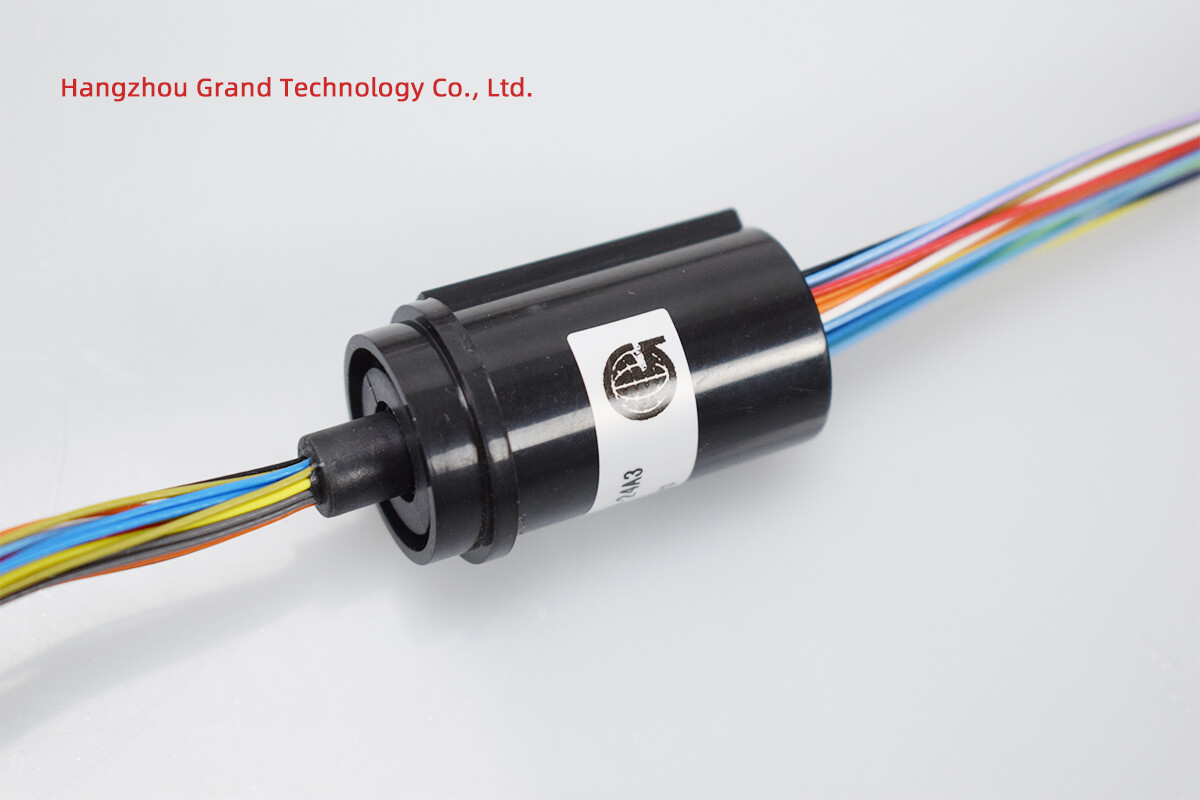
Key Elements of How Slip Ring Induction Motors Work
To comprehend the process of how slip ring induction motors function, we have to begin by recognizing key elements that play an integral part in their operation. These critical components include the stator, the rotor, the slip rings, and the brushes.
Stator: The stator, forming the stationary part of the motor, houses windings or coils. When subject to an alternating current (AC), these windings produce a rotating magnetic field. The strength of the magnetic field isn’t static but varies according to the frequency and amplitude of the AC supply. This generated rotating magnetic field is responsible for instigating the motor’s movement.
Rotor: The rotor is the part of the motor that rotates in response to the magnetic field created by the stator. While there are various types of rotors, the slip ring induction motor features a wound rotor. Winding on the rotor correlates to that on the stator and is linked to the external circuit via the slip rings.
Slip Rings and Brushes: Slip rings form a vital part of a slip ring induction motor, providing a connection between the rotor windings and the external circuit. They are mounted on the rotor’s shaft and rotate with the rotor. Meanwhile, brushes, conducting current, slide on these rings, thereby making a pathway for the current from the stator to flow into the rotor windings.
By understanding these key components and their interaction, we can essentially grasp the fundamental working principle of slip ring induction motors. When the stator’s rotating magnetic field induces a current in the rotor windings, the effect of this magnetic flux incites the rotor to rotate, transforming electrical energy into mechanical energy.
A vital aspect impacting the kinetics is ‘slip’ – the speed difference between the rotating magnetic field and the rotor. The slip is critical to the induction principle, and in the case of slip ring induction motors, it can be managed by altering the resistances connected to the rotor through the slip rings. This characteristic contributes to the flexibility of these motors, making them fully adjustable to cater to varying demands for speed, torque, and energy efficiency.
Slip Ring Motor Working Principle
The unique working principle of a slip ring motor, also referred to as a wound rotor induction motor, sets it apart from other types of induction motors. Understanding ‘how does a slip ring motor work‘ involves delving into the intricate orchestration of its components and their interaction.
In essence, a slip ring motor operates on the principles of electromagnetism and electromagnetic induction. The motor consists of two primary parts: the stator (stationary part) and the rotor (rotating part). Within the stator are windings or coils, which, when supplied with an alternating current, generate a rotating magnetic field.
The rotating magnetic field of the stator induces a current in the rotor windings, according to the principle of electromagnetic induction. The rotor, also containing windings, is connected to a set of slip rings that rotate with it. Brushes, connected to an external circuit, slide over these rings during rotation, offering an efficient means of transferring current from the stator to the rotor’s windings.
The interaction between the magnetic fields of the stator and rotor creates a force that causes the rotor to rotate. The mechanical power thus generated can be harnessed for various applications, ranging from turning wheels in electric cars to driving pumps and machines in industrial settings.
Now, transitioning to the ‘slip ring motor starter working principle‘, it’s essential to understand the role of ‘slip’ in the operation of an induction motor. The ‘slip’ represents the speed difference between the rotating magnetic field of the stator and the actual speed of the rotor. Too much slip can cause a drop in efficiency, and too little the induction phenomenon would fail, and the motor would cease to operate.
In a slip ring induction motor, the external resistances connected to the rotor winding through the slip rings can be changed to control the slip. This adjustability makes the slip ring motor versatile, allowing for the control of its starting current, speed, and torque according to the operational demands.
Therefore, the working principle of a slip ring motor allows it to offer a blend of power, versatility, and control, making it a go-to choice for many heavy-duty industrial applications.
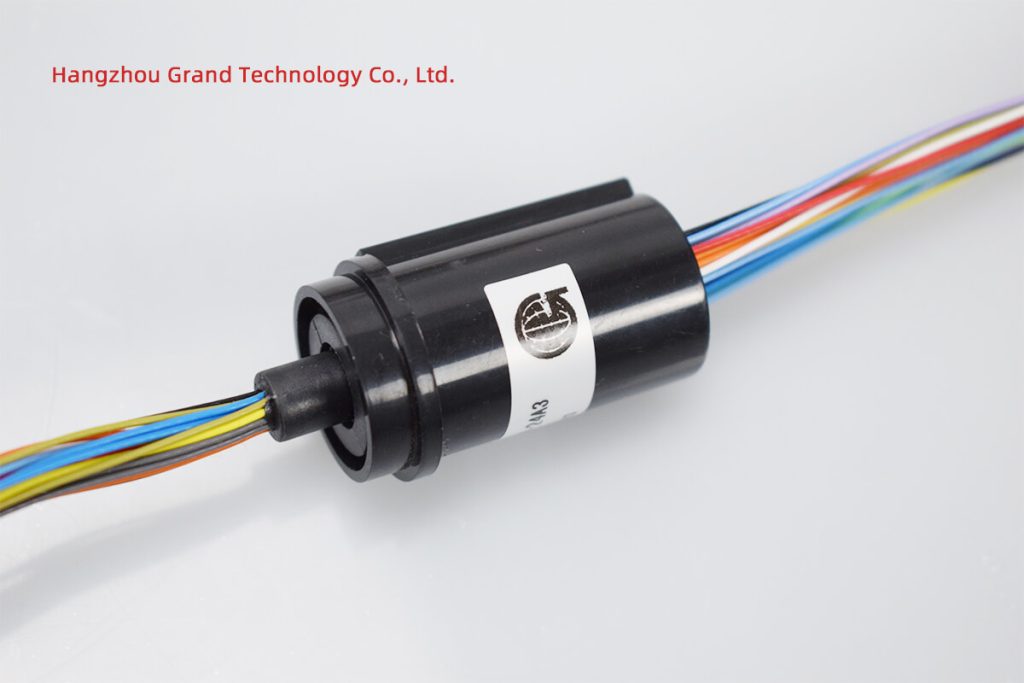
Slip Ring Induction Motor Speed Control
Comprehending how we maneuver the speed of a slip ring induction motor unravels another intriguing facet of its functionality. As machines are required to run at varying speeds for different industrial applications, the induction motor’s ability to control its speed becomes immensely crucial. This section homes in on understanding this speed control mechanism and the influential factors that play a role in it.
In a slip ring induction motor, the speed control primarily hinges on managing the ‘slip’. Remember, ‘slip’ refers to the relative speed difference between the rotating magnetic field generated by the stator and the actual speed of the rotor. By influencing the slip, one can effectively exert control over the motor’s speed.
So, how exactly is it done? A chief strategy to control the speed emerges from its very anatomy—the slip rings. Attached to the rotor, these slip rings offer an external access point to the rotor windings. By connecting varying levels of resistance through the slip rings onto these rotor windings, we can regulate the slip and thus, control the speed of the induction motor.
Factors Affecting Slip Ring Induction Motors Speed Control
Slip ring induction motors are known for their versatility and adaptability when it comes to speed control. Several factors influence the range and efficiency of speed control in these motors, with the most prominent ones being:
External Resistance: In slip ring induction motors, the rotor windings are connected to external resistances through slip rings and brushes. The primary means of controlling speed in these motors is by adjusting these external resistances. By increasing the resistance, more slip occurs, ultimately reducing the motor’s speed. Conversely, decreasing resistance augments the motor’s speed.
Voltage and Frequency: The applied voltage and frequency of the stator windings directly affect the speed of the slip ring induction motor. However, this method is not typically employed since it could result in unstable torque and power factor. Voltage control tends to create an imbalance in the torque-speed characteristic, ultimately affecting the motor’s performance. On the other hand, frequency control is more viable for variable frequency drive applications, where the voltage is tuned simultaneously to maintain the voltage/frequency ratio.
Pole Changing: Every induction motor has a specific number of poles that determine its synchronous speed. Altering the number of poles will affect the motor’s speed. In dual- or multi-speed slip ring induction motors, pole changing can be achieved through a specially designed stator winding configuration. Although this method offers fewer speed control options than varying external resistance or rotor resistance, it is highly stable and efficient.
Load Torque: The slip ring induction motor’s speed is also affected by the load torque it encounters. An increase in the load torque results in a decrease in the motor’s speed. Conversely, a decrease in load torque will prompt an increase in speed. A stable load torque ensures a smooth speed control process. However, this relationship is mainly managed by selecting the motor’s capacity and configuration to match the load requirements suitably.
In summary, multiple factors affect the control of slip ring induction motor speed. While some methods like adjusting external resistances and frequency control are preferred, others like voltage control and pole changing may have limitations. Ultimately, the optimal speed control strategy depends on the motor’s specific application and desired performance.
Peeling back the layers behind the speed control mechanism of slip ring induction motors unearths a beautifully orchestrated interplay of various factors and components. In understanding these, we develop an appreciation for the versatility of these motors in adapting to the diverse needs of different applications and industries, a topic we will explore next.
Slip Ring Induction Motors Benefits and Applications in Industries
As we’ve delved into the intricacies of slip ring induction motors, we’ve come to understand not only the pivotal role of each of their components but also the delicate interplay and regulation of factors such as slip and speed. These mechanisms equip the motor with the strength and versatility to seamlessly accomplish a wide range of tasks. As we illustrate its various industrial applications, the manifold benefits of the slip ring induction motor will emerge compellingly.
Advantages of Slip Ring Induction Motors in Industry Applications
Slip ring induction motors endow industries with many specific advantages, making them a preferred choice for numerous applications:
1. High Starting Torque: Slip ring induction motors are capable of generating high starting torque at a low starting current. This ability is of immense benefit for heavy load applications where a significant amount of torque is required at startup. The capability to deliver this high torque stems from the unique feature of being able to add an external resistance in the rotor circuit during startup.
2. Speed Control: Another significant advantage of slip ring induction motors is the ease of speed control. By adapting the external resistance connected to the rotor circuit, we can effectively control the speed of the motor. This extra level of control is particularly beneficial in situations where variable speed operation is a necessity.
3. Improved Power Factor: Slip ring induction motors generally operate at a high power factor. As more resistance is added to the rotor circuit, the power factor increases, making these motors highly efficient. This is a major advantage in large industrial applications where energy efficiency is paramount.
4. Enhanced Durability: These motors exhibit higher immunity to electrical and mechanical stresses due to their robust construction. This improved ruggedness, combined with the inherent flexibility of speed control, results in a motor that can withstand demanding industrial environments.
5. Adaptable to Load Conditions: The speed-torque characteristics of slip ring induction motors are adaptable according to the load requirements. This adds another layer of operational versatility, making them convenient for processes that demand different speed and torque levels.
In conclusion, the unique blend of high starting torque, efficient speed control, high power factor, robust construction, and adaptable performance makes the slip ring induction motor an indispensable part of a wide range of industries. Whether it’s heavy-duty industrial machinery or applications requiring varied speed controls, the versatility, and power of slip ring induction motors make them irreplaceably valuable.
Applications of Slip Ring Induction Motors Across Industries
Slip ring induction motors find wide-ranging applications across varied industries due to their high starting torque, robust construction, and efficient speed control. Let’s delve into some specific examples:
1. Metals and Mining Industry: One of the primary industries that extensively utilize slip ring induction motors is the metals and mining industry. These motors drive equipment like crushers, conveyors, and grinding mills, where high starting torque and controlled variable speed are paramount. The ability to handle heavy loads reliably makes these motors an industry favorite.
2. Processing and Manufacturing: Slip ring motors play a critical role in various processing industries including cement, pulp and paper, and chemical processing plants. For instance, in cement production, these motors control ball mills or rotary kilns, where variable speed and high starting torque are vital. Similarly, paper mills, offer variable speed control, matching process requirements efficiently.
3. Hoists and Elevators: In hoist and elevator systems, slip ring induction motors’ capability of starting under heavy loads, combined with efficient speed control, renders them ideal for these applications. They provide smooth operation, reduce mechanical stress on the system, and improve overall safety measures.
4. Marine Industry: These types of motors are used in various marine applications including bow thrusters, winches, and on-deck machinery. Their resilience in demanding conditions and flexibility with speed control make them well-suited to the rigors of marine environments.
5. Power Generation: In power generation plants, slip ring induction motors find usage in driving pumps, compressors, and other auxiliary systems. Their high efficiency and reliability contribute substantially to the plant’s overall operational efficiency.
In conclusion, slip ring induction motors are highly versatile, providing a myriad of advantages in different industrial applications. From offering high starting torque and efficient speed control to ensuring robust performance under heavy loads and varying conditions, these motors significantly enhance operational efficiency, making them a preferred choice across diverse industries.
To sum up, the array of slip ring induction motor applications paints a clear picture of its immense versatility and adaptability. Be it for their superior starting torque, adaptable speed, or reduced starting current, most industries would find it hard to function without the irreplaceable contributions of these motors. As we continue our journey exploring the world of slip ring induction motors, we’ll grow to appreciate their irrefutable importance in powering our industries.
Advantages and Disadvantages of Slip Ring Induction Motor
As with any piece of technology or engineering, slip ring induction motors have their unique set of advantages and disadvantages. Understanding them can help us make informed decisions on their application scope, utility, and suitability to specific tasks. In this section, we aim to explore both the strengths and limitations of these motors.
Advantages:
- High Starting Torque: The most significant advantage of slip ring induction motors is their ability to produce a high starting torque. This capability is invaluable in industries requiring high torque at startup, such as those involving heavy machinery or tools.
- Speed Control: The ingenious design of slip rings allows for efficient control over motor speed. The ability to externally adjust the resistance connected to the rotor through the slip rings facilitates effective control of the slip and, thus, the speed of the motor. This makes slip ring motors ideal for operations needing variable speeds.
- Reduced Starting Current: By introducing additional resistance in the rotor circuit during startup, these motors help limit the inrush current, reducing the starting stress on the motor and the power supply. This can be of immense benefit in power-sensitive applications or areas.
Disadvantages:
- Maintenance: The presence of slip rings and brushes within the motor necessitates regular inspection and maintenance. The continuous friction between these parts can lead to wear and tear over time. Therefore, ensuring they are well-maintained is essential for the optimal functioning of the motor.
- Efficiency: Although the slip ring induction motor is dynamic and adaptable, the inclusion of extra resistance can, at some point, lead to power loss, affecting the overall efficiency of the motor.
- Cost: These motors tend to be more complex in design and structure than their squirrel cage counterparts. Consequently, they tend to be more expensive, both in terms of initial procurement and maintenance over time.
In conclusion, the application of slip ring induction motors ultimately hinges on balancing their strengths with the tasks at hand and their constraints. In situations where the requirements match the benefits, slip ring induction motors can indeed be incredibly effective and advantageous. Understanding their limitations, concurrently, can help mitigate any inefficiencies and optimize their function.
Difference Between Squirrel Cage and Slip Ring Induction Motor
While there are various types of induction motors, the most widely encountered ones are arguably the Squirrel Cage and the Slip Ring Induction Motors. Though they share the common ground of functioning based on the principle of electromagnetic induction, they exhibit crucial differences that impact their performance and applications. This section will embark on a comparative analysis, shedding light upon the core contrasts and unique benefits of both types.
| Parameter | Squirrel Cage Induction Motor | Slip Ring Induction Motor |
|---|---|---|
| Construction | Simple construction with a rotor comprised of parallel bars, short-circuited by end rings. | Complex construction featuring three slip rings connected to the rotor via brushes. |
| Speed Control | Speed cannot be changed—suitable for constant speed operations. | Speed can be changed by altering the external resistance, making it suitable for variable speed operations. |
| Starting Torque | Limited starting torque due to the fixed design of the rotor. | High starting torque due to the ability to include external resistance during startup. |
| Maintenance | Almost maintenance-free due to the absence of wearing parts. | Requires regular maintenance due to the risk of wear and tear of the brushes and slip rings. |
| Starting Current | High starting current. | Reduced starting current due to the introduction of resistance during startup. |
| Cost | Generally cheaper, both in initial cost and maintenance due to simpler construction. | Tends to be more expensive due to complex design and higher maintenance needs. |
Slip Ring Induction Motors Comparison with Other Motor Types
The universe of electric motors is vast and varied, with each type presenting unique features, advantages, and disadvantages that make them suitable for certain applications. Throughout this discussion, we’ve primarily focused on the Slip Ring Induction Motor. Now, let’s broaden our scope to examine how it stacks up against other types of motors.
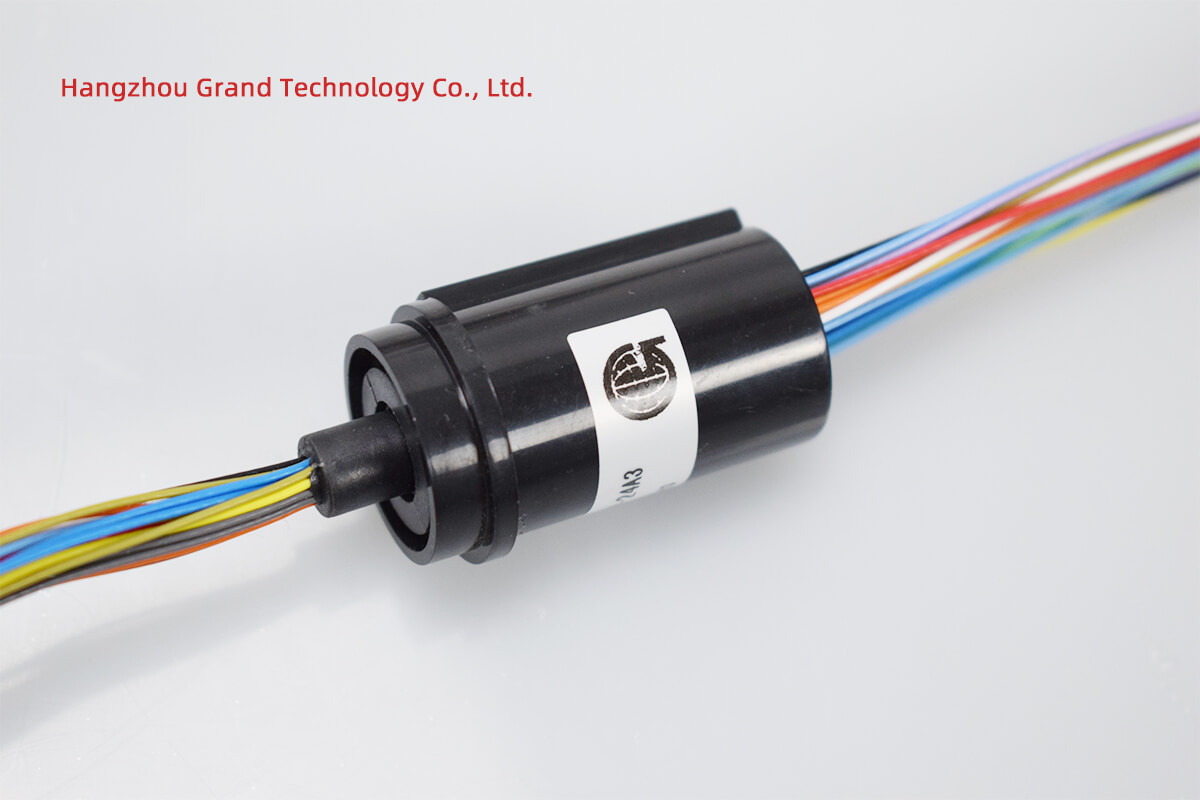
Slip Ring Induction Motors VS. Brushless DC Motor
While both slip ring induction motors and brushless DC motors play crucial roles in various aspects of industry and technology, each has its unique benefits and drawbacks that make them suitable for specific types of applications.
Slip Ring Induction Motors
Slip ring induction motors, also known as wound rotor induction motors, are AC motors characterized by their robustness, high starting torque capabilities, and adaptable speed controls. These motors have a wound rotor connected to an external circuit via slip rings and brushes, facilitating adjustable performance according to demands. This feature makes slip ring motors ideal for heavy-duty applications and processes requiring varied speed controls such as crushers, elevators, and industrial machining.
Brushless DC Motors
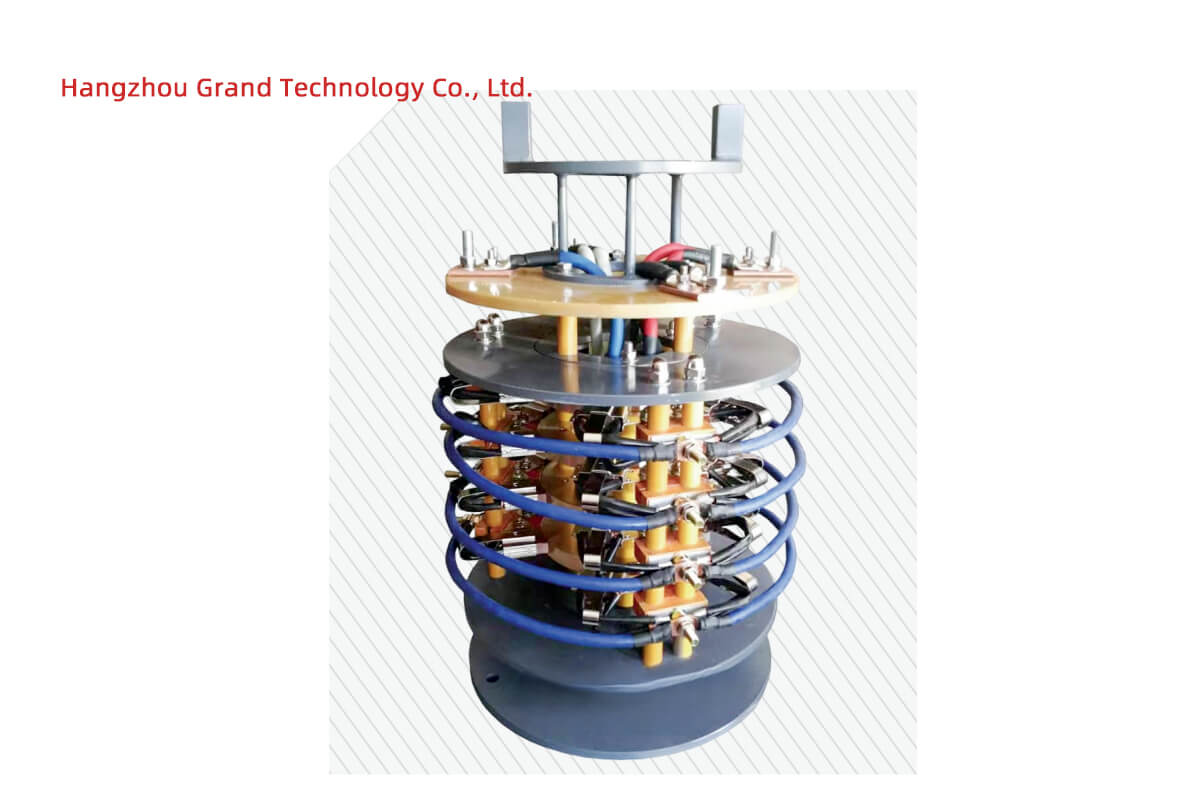
Brushless DC motors, on the other hand, are essentially DC motors without brushes, designed to mitigate certain drawbacks of traditional brushed motors such as mechanical wear and electric sparking. These motors use an electronic commutation system powered by a DC electric source. Distinct advantages offered by brushless DC motors include high efficiency, extensive operational life due to the absence of brushes, lower maintenance requirements, and precise control of torque and speed. These features make them suitable for applications where durability, efficiency, and a degree of precision control are required. Examples include computer hard drives, electric vehicles, and drones.
Comparison
When comparing both, slip ring motors generally provide higher starting torque, making them more suitable for heavy-duty industrial applications. They also offer variable speed control, which is advantageous in industries such as mining, power generation, and manufacturing.
Brushless DC motors deliver high levels of efficiency and longevity, which make them ideal in applications that demand reliability over extended operational periods. Their precise control over torque and speed, combined with compact size and lightweight, makes them widely utilized in the automotive, consumer electronics sector, and aerospace industry.
In conclusion, the choice between a slip ring induction motor and a brushless DC motor highly depends on the specific requirements of the application. It’s essential to consider factors such as required torque, speed control, efficiency, and operational lifespan while making this choice.
Slip Ring Induction Motors VS. Synchronous Motor
Both slip ring induction motors and synchronous motors are extensively used across various industries, though they operate differently and serve diverse functions. Understanding the key differences will aid in the selection of the correct motor for a specific task.
Slip Ring Induction Motors
Slip ring induction motors, also known as wound-rotor motors, are a type of AC motor where power is supplied to the rotor by means of slip rings. Notably, these motors offer high starting torque and variable speed control, rendering them ideal for applications that require a robust start and speed variation, such as crushers, conveyors, and compressors in heavy industries.
In slip ring motors, the speed of the rotor lags behind the speed of the magnetic field of the stator – this difference in speed is referred to as ‘slip’. Slip is essential for torque production, making these motors admirably suited for high-torque requirements.
Synchronous Motors
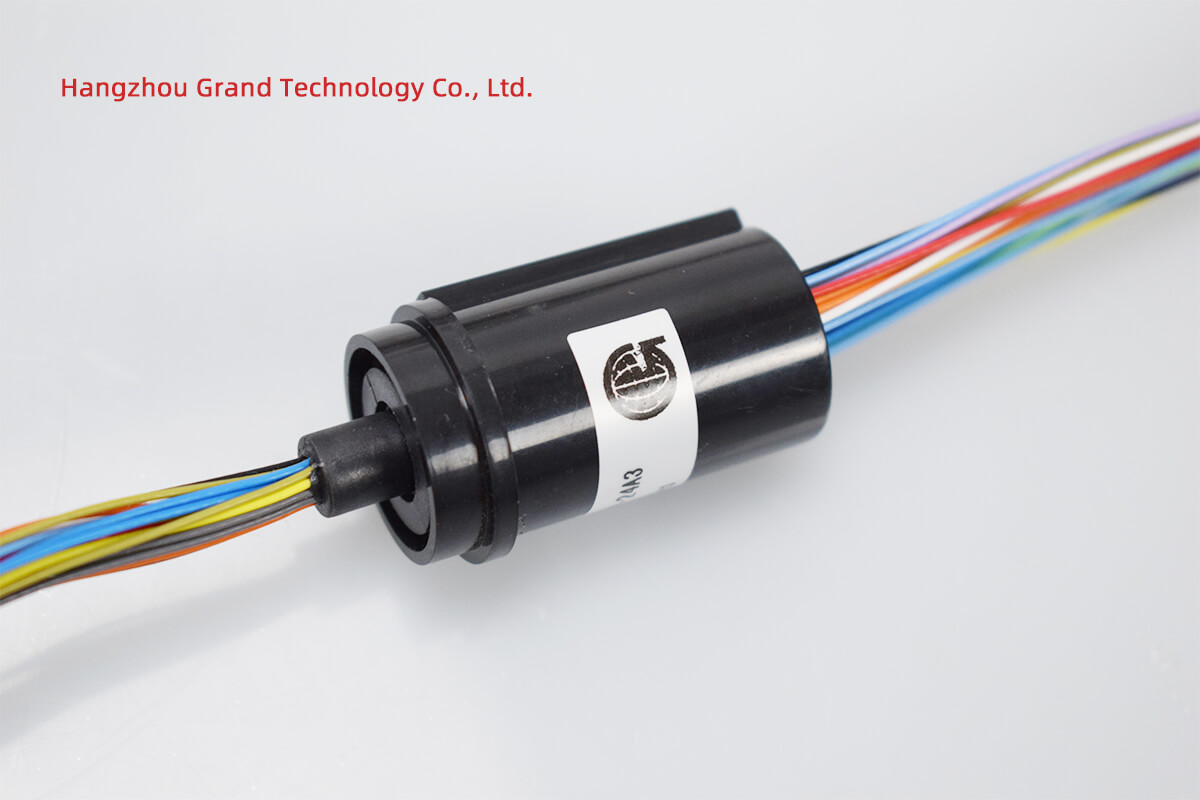
Synchronous motors, in contrast, operate in synchronism with the supply frequency. In other words, the rotor speed matches the speed of the rotating magnetic field produced by the stator, resulting in a constant motor speed unaffected by variations in load.
These motors are particularly useful in power factor correction and are often employed in applications where precise constant speed is required, such as clock towers, telescopes, gyroscope stabilizers, and some types of machine tools.
Comparison
The key differences between slip ring induction motors and synchronous motors lie in their speed and operation. While slip ring induction motors offer variable speed controls and high starting torque, synchronous motors provide constant speed unaffected by load variations.
The selection between a slip ring induction motor and a synchronous motor depends largely on the specific application requirements. For tasks where high starting torque and speed control are critical, slip ring induction motors are typically preferred. Alternatively, for operations demanding constant and precise speed, synchronous motors have an edge.
Again, energy efficiency, cost, maintenance requirements, and size constraints also play a role in the final decision between these two distinct types of motors.
Slip Ring Induction Motors VS. Direct Current (DC) Motor
When deciding between different types of electrical motors for a particular application, two types that often come into discussion are slip ring induction motors and direct current (DC) motors. Understanding the differences in their operation and uses can inform the optimal choice.
Slip Ring Induction Motors
Slip ring induction motors, or wound-rotor motors, are a type of alternating current (AC) motor. They offer high starting torque and the ability to control speed, which are beneficial characteristics for heavy-duty applications such as crushers, conveyors, and compressors. The speed of the rotor in a slip ring induction motor lags slightly behind the speed of the stator’s magnetic field, a phenomenon referred to as ‘slip.’ This slip is essential to the motor’s operation as it influences the production of torque.
Direct Current Motors
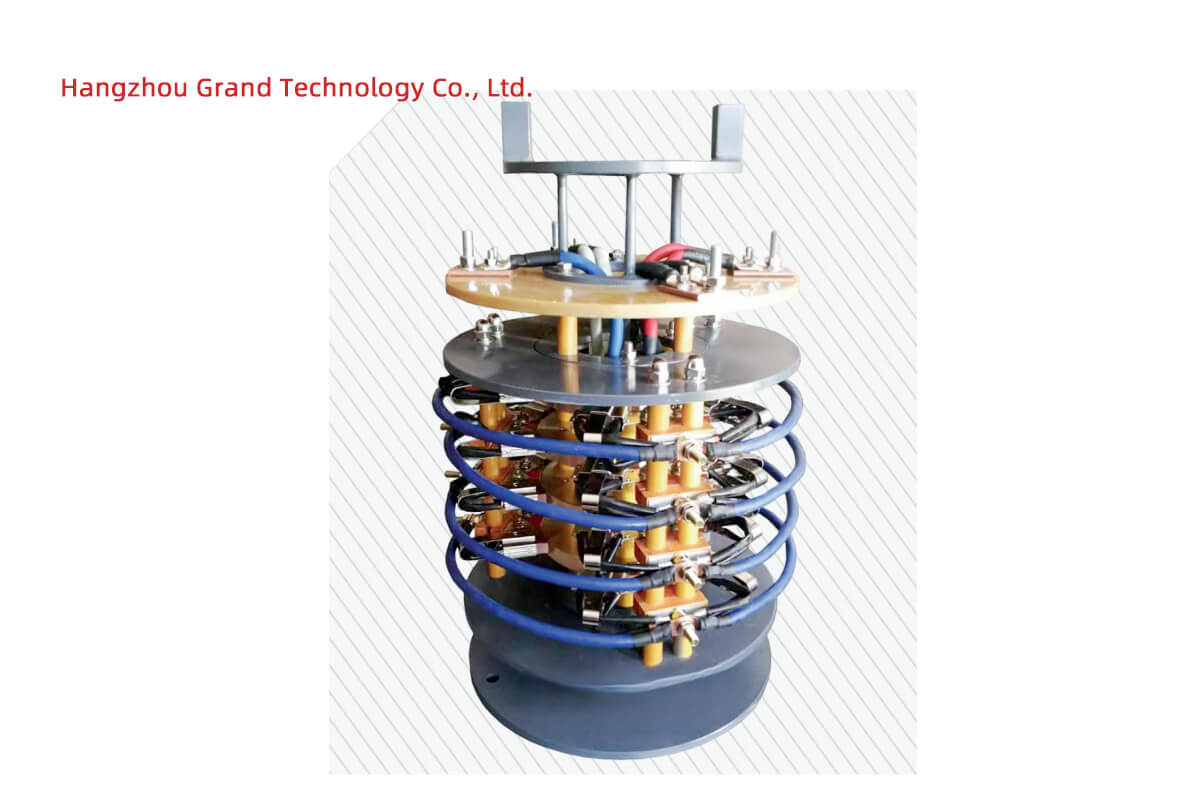
Direct current (DC) motors, on the other hand, operate using direct current electrical power. DC motors offer the capability to control their speed over a wide range, and they’re known for their fast starting, stopping, speed control, and reversing. Additionally, a DC motor can deliver high torque at low speeds, something that can be beneficial for applications such as electric vehicles and cranes.
Comparison
When comparing slip ring induction motors and DC motors, several differences become apparent. While slip ring motors can offer a high starting torque and variable speed control, making them suitable for heavy-duty industrial applications, DC motors provide excellent controllability over a wide range of speeds, useful in applications such as electric drives and robotics where precise control is required [1%5E].
DC motors, however, demand more maintenance due to wear and tear on the brushes and commutator. In contrast, slip ring motors, though requiring some maintenance for their brushes and slip rings, generally require less due to their robustness and simple construction.
In conclusion, the decision between a slip ring induction motor and a DC motor depends largely on the specific application needs. Operational factors such as required starting torque, and speed control, along with maintenance considerations, are important factors influencing that decision.
Slip Ring Induction Motors VS. Servo Motor
Both slip ring induction motors and servo motors are crucial for many applications across various sectors of industry. However, they exhibit significant differences in their operational principles, applications, and capabilities.
Slip Ring Induction Motors
Slip ring induction motors, also known as wound rotor motors, are a type of alternating current (AC) motor. These motors consist of a rotor connected to the external circuit via slip rings and brushes. With their high starting torque and adjustable speed controls, slip ring induction motors are ideal for applications requiring robust start-up and variable operation speeds. These may involve heavy machinery in industries such as manufacturing, mining, and construction.
In slip ring induction motors, the rotor speed lags slightly behind the speed of the stator’s magnetic field, a phenomenon called ‘slip.’ This characteristic is crucial for generating torque in applications requiring high start-up loads.
Servo Motors
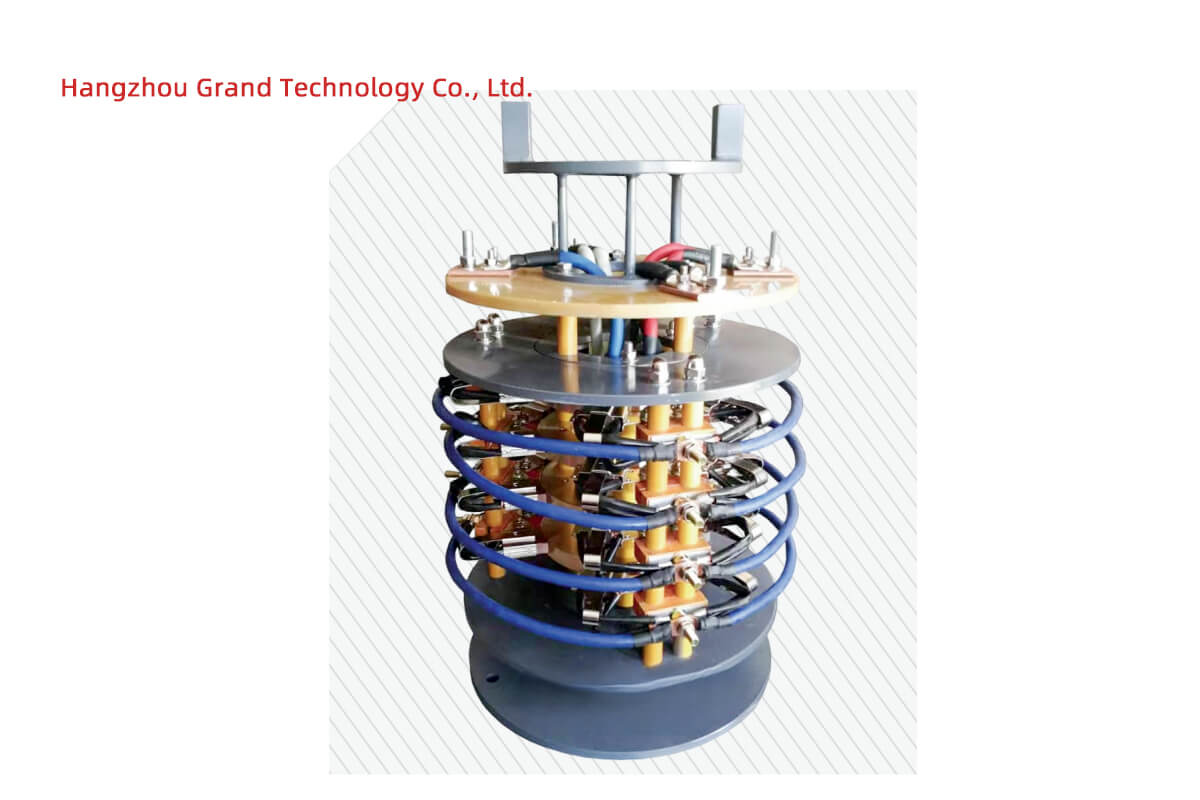
Servo motors, contrastingly, are closed-loop devices that incorporate position feedback to control both rotational or linear movement accurately. The core of a servo motor consists of a DC or AC motor, a position sensor, and a control circuit. Servo motors are recognized for their precision, speed, and reliability, becoming a preferred choice in applications where accurate positioning is a must. The use of servo motors spans across robotics, CNC machinery, automation, and more.
Servo motors can abrupt start, stop, and reverse direction very efficiently, making them perfect for tasks demanding complex motion sequences. Moreover, they can produce high torque while maintaining a compact size and minimizing power consumption.
Comparison
The differences between slip ring induction motors and servo motors relate primarily to their speed control, operation, and application areas. Slip ring induction motors demonstrate high starting torque and adjustable speeds, making them well-suited for heavy machinery and industrial processes. Servo motors, conversely, offer superior precision and efficiency, which underlines their importance in automated systems, robotics, and machinery requiring exact positioning.
When choosing a motor, the nature of the task, the precision required, and the operational environment should be kept in consideration to select the motor that will best serve the purpose.
Overall, the slip ring induction motors, with their superior starting torque, adaptable speed, and potentially lower starting current, offer a strong argument for their use in many industrial environments. Yet, their application is not universal; the superior precision of servo motors or the reduced maintenance of brushless DC motors can tip the scale in their favor for certain tasks. The quest is to strike a balance between the motor’s advantages against its disadvantages while considering the requirements of the specific application at hand. This understanding will equip professionals to choose the most suitable motor with confidence.
Guide for Slip Ring Induction Motors Maintenance and Troubleshooting
Maintaining slip ring induction motors at their peak performance and resolving common issues when they arise marks a critical component of their lifecycle. This guide seeks to provide practical recommendations for both preventive maintenance and troubleshooting.
Preventive Maintenance:
- Visual Inspection: Regularly inspect the overall condition of the motor. Look for any observable issues such as overheating, excessive dust or dirt accumulation, unusual noises, or any visible damage.
- Cleaning: Periodically clean the motor to remove dust and dirt. Accumulated dust can block ventilation causing overheating.
- Inspection of Slip Rings and Brushes: Given the vital role they play, slip rings and brushes should be checked for wear and tear regularly. Ensure brushes slide freely in their holders and have a firm, uniform contact with the slip rings. Replace them timely if worn out.
- Lubrication: Make sure bearings are properly lubricated according to the manufacturer’s specifications to prevent overheating and undue wear and tear.
Troubleshooting:
- Motor Not Starting: If the motor doesn’t start, first check the power supply and connections. If these are right, inspect the run capacitor, which may be defective. Inspect the windings for a possible short circuit or open circuit.
- Overheating: Overheating might be caused by an overloaded motor, blocked ventilation, or lack of maintenance. Ascertain that the motor is not running more than its rated load, ensure the cooling system works fine, and check that regular maintenance is not overdue.
- Vibrations: If the motor is vibrating excessively, check for loose mountings or out-of-balance rotors. Fixing these should remove the unwanted vibrations.
- Excessive Noise: Typical causes of excessive noise could be worn-out bearings, unbalanced rotors, loose parts, or lack of lubrication. Identifying and addressing the cause should quiet down the motor.
It’s important to note that each slip ring induction motor may come with unique aspects based on the manufacturer’s design, and it is strictly recommended to refer to the manufacturer’s manual for specific maintenance and troubleshooting guidelines.
In conclusion, preventive maintenance and timely troubleshooting, aligned with a deep understanding of the motor’s workings, can significantly prolong its life, improve efficiency, and ensure uninterrupted, smooth operations.
Slip Ring Induction Motors Future Trends and Technological Advances
The world of electric motors, including slip ring induction motors, is under constant evolution and refinement. Developments in material sciences, electronic controls, and digital technologies have left an indelible mark on how these workhorses of our industries function. Let’s consider the promising future trends and the technological advances that stand to interact with and influence the realm of slip ring induction motors.
- Smart motors and IoT (Internet of Things): As industrial processes become more digital, interconnected, and smart, slip ring induction motors will not be left behind. The incorporation of IoT technologies will allow these motors to become smart machines that can be remotely monitored, controlled, and even repaired. For instance, embedded sensors measuring parameters like temperature, vibration, and current can transmit data for predictive maintenance, eventually minimizing downtimes and improving overall performance.
- Advanced materials for motor components: Innovations in material sciences could lead to the development of more robust, efficient, and long-lasting components. For example, advanced materials or alloys used in the construction of brushes and slip rings could reduce wear and tear, boosting the lifespan of these motors.
- Energy Efficiency: Increasing global awareness about energy conservation and environmental sustainability is pushing the technology towards more energy-efficient motors. Future iterations of slip ring induction motors may have higher efficiency, reducing energy consumption and cutting operating costs.
- Improved Design Software: Advancements in design software can facilitate improved motor designs, optimizing performance. For example, software can help engineers design motors with the optimal balance of torque, speed, and efficiency for each application.
- Regenerative Drives: The next generation of slip ring induction motors might feature improved regenerative drives that not only adjust the motor speed but also feed energy back into the system when the motor is slowing down, promoting energy efficiency.
To sum it up, slip ring induction motors, a testament to time-tested technology, continue to evolve, powered by the advancements in neighboring technological domains. By embracing these changes and advancements, industries can look forward to more efficient, durable, and intelligent motor systems, steering us closer to a more sustainable and interconnected future.
Purchasing Slip Ring Induction Motors: Where to Look
Slip ring induction motors can be found in a variety of sources, from electronic retailers, and industrial equipment suppliers, to various online platforms.
1. Manufacturer Direct: Buying directly from manufacturers is often a good place to start. Renowned brands like ABB, Siemens, and General Electric produce a variety of industrial motors, including slip ring induction motors. Purchasing directly from manufacturers allows buyers to pick products that perfectly suit their requirements – with added customization options. Additional benefits include the assurance of getting a product made to industry standards and after-sales service.
2. Industrial Equipment Suppliers: Industrial equipment suppliers or distributors are another valuable source. Companies like Grainger and MSC Industrial Supply offer a wide range of motors, and their distribution network can make their motors more readily available to consumers.
3. Online Platforms: The rise of e-commerce has made buying industrial equipment easier. Websites like Alibaba and Amazon feature multiple vendors selling slip ring induction motors. Here you can compare different brands, specifications, and prices side by side, facilitating a more informed purchase decision.
4. Used Equipment Dealers: For businesses on a tight budget, used equipment dealers might be a feasible option. These dealers sell used or refurbished motors that can be substantially cheaper than new ones. Websites like eBay and Used Equipment Network feature a broad inventory of used equipment from around the world.
Before purchasing a slip ring induction motor, it’s crucial to cross-check the specs and match them with the application requirements. Also, look for reviews and ratings if available and consider the warranty and after-sales service.
Conclusion
As we wrap up our discussion, we reflect back on the omnipresent yet overlooked role of slip ring induction motors. These motors, marked by their robust construction and inherent advantages in generating high starting torque with potentially lower starting current, play an indomitable role in driving modern industry.
From elevating cargos in cranes, milling grains in agri-based industries, and compressing gasses in HVAC systems, to powering drilling operations in oil rigs, the footprint of slip ring induction motors expands across multiple sectors. The merits of these motors, particularly their adaptability to varying speed requirements, carve a unique niche for them in the arena of electric motors.
Acknowledge the prevailing challenges they face – maintenance issues associated with brushes and slip rings, or efficiency concerns when compared to some other motor types – the slip ring induction motor continues to hold its ground. Its time-tested design, coupled with continual advancements in materials and technology, mediates these limitations, promising a bright future ahead.
Furthermore, their integration with emerging technologies such as IoT and predictive modeling paves the way for “Smart Motors,” hinting at a future where motors will not just be the primal movers but also an integral part of the smart industrial ecosystem. Through remote monitoring, preemptive maintenance, and adaptive control, they have the potential to significantly boost operational efficiency and longevity, marking a revolutionary stride in the industrial sector.
In conclusion, the importance of slip ring induction motors, both in their current ubiquitous presence and along the horizon of future advancements, cannot be overstated. These unassuming powerhouses quietly take the brunt of our industrial needs, catalyzing a ceaseless dance of machinery and processes. They stand as a testament to human ingenuity in harnessing and commanding the electric power that fuels our civilization.
FAQs About Slip Ring Induction Motors
Despite the comprehensive discussion thus far, it’s natural to have questions or doubts regarding slip ring induction motors. Below, we’ve tried to address some of the frequently asked questions about these motors, providing a well-rounded and understandable perspective on their usage.
Q: What are the key applications of slip ring induction motors?
A: Slip ring induction motors, due to their high starting torque and variable speed characteristics, find applications in industries requiring such features. They are widely used in lifts, cranes, compressors, mills, power stations, and drilling rigs.
Q: What is the role of external resistance in a slip ring induction motor?
A: During the startup phase, an external resistance is added to the rotor circuit. This increases the resistance of the circuit, thereby increasing the starting torque, and reducing the starting current of the motor, which is beneficial for smooth and efficient startup.
Q: How often should slip rings and brushes be replaced?
A: The replacement cycle of slip rings and brushes depends largely on the motor’s operating conditions, including load, frequency of starts/stops, and preventative maintenance practices. Regular inspection for signs of wear and tear is crucial and should serve as a guiding principle for replacement.
Q: How can I ensure the longer lifespan of a slip ring induction motor?
A: Regular and proper maintenance is fundamental to prolong the life of a slip ring induction motor. This includes frequent inspection, keeping the motor clean, ensuring proper lubrication, timely replacement of worn-out parts, and heat management.
Q: Can the speed of a slip ring induction motor be controlled?
A: Yes, slip ring induction motors offer variable speed control. This is accomplished by changing the external rotor resistance, a feature that stands as a key advantage of these motors in certain applications.
Q: What is a slip ring motor?
A: A slip ring motor, also known as a wound rotor induction motor, is a type of induction motor that has a wound rotor, which is connected to an external electrical circuit via slip rings and brushes. These motors are popular for high starting torque, efficient control of speed, and versatility in adjusting load-torque characteristics.
Q: What are the main components of a slip ring motor?
A: The primary components of a slip ring motor include:
- Stator: The stationary outer component containing windings or coils.
- Rotor: The rotating inner part featuring wound rotor windings.
- Slip Rings: Cylindrical conductive rings attached to the rotor and responsible for connecting the rotor winding to the external circuit.
- Brushes: Conductive brushes that slide over the slip rings, allowing for the transfer of electrical energy between the stationary and rotating components.
Q: How does a slip ring motor work?
A: A slip ring motor functions using the induction principle. When an alternating current (AC) is applied to the stator windings, it generates a rotating magnetic field. This magnetic field induces a current in the rotor windings which produces another magnetic field. The interaction between these two fields creates a torque that causes the rotor and, subsequently, the motor shaft to rotate.
Q: What is the main advantage of using slip ring motors?
A: The primary advantage lies in its ability to produce high starting torque at a low starting current, making it ideal for heavy load applications. Additionally, slip ring motors offer efficient control of speed through adjustments of the external resistance connected to the rotor circuit, making them well-suited for applications requiring variable speed.
Q: Where are slip ring motors used?
A: Slip ring motors are widely employed in industries that require high starting torque and speed control, such as metals and mining, processing, hoists and elevators, marine, and power generation plants. Some specific applications include driving crushers, ball mills, hoist systems, and deck machinery.
Q: How can the speed of a slip ring motor be controlled?
A: Speed control in slip ring motors is typically achieved by modifying the external resistance connected to the rotor circuit. Increasing the resistance induces more slip, reducing the motor speed, while decreasing the resistance results in an increased motor speed. Other methods for speed control, though less common, include voltage and frequency control or pole changing.
Q: What is slip in a slip ring motor?
A: Slip in a slip ring motor is the difference in speed between the rotating magnetic field (produced by the stator) and the rotor. It’s essential for the induction principle and can be managed by adjusting the resistance connected to the rotor circuit, enabling these motors to cater to varying speed and torque demands.
See What We Can Do
